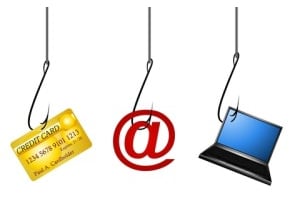Each quarter, the Anti-Phishing Working Group (APWG) puts out a report to keep all sectors aware of current cybercrime threats. The APWG is an international coalition that consists of more than 1,800 institutions globally designed to create a unifying force to combat these threats. Their latest published report offers some interesting insights into phishing attacks and how they are escalating including what vertical is at the most risk. Consider four takeaways worth understanding from the APWG’s latest phishing activity report.
1. The Data Proves Phishing Attacks are Escalating
The report states that phishing attacks are up by 65% from the previous year. The total number of attacks in 2016 was 1,220,523 – this breaks down to between 70,000 to 156,000 attacks each month. The net average is listed at 92,564. December was the least active with a recorded 69,533 attacks. Their theory is that the phishers slowed down purposely during the holiday season, focusing more on lower-yielding and experimental targets. The AWPG post states the most attacks came in April.
The increase of attacks includes spear-phishing activity on employee email accounts, putting companies at even greater risk of data theft. As a result, phishing has become much more sophisticated, as well. The attackers take their time to find out which companies and employees are most vulnerable.
2. The Fourth Quarter Reports the Highest Level of Cybercrime Threats Ever
The AWPG began producing this report in 2004. That year, the average number of phishing attacks was just 1,609 per month. With the fourth quarter numbers in, that average has grown exponentially. The AWPG has seen an increase of 5,753% in the 12 years they have monitored this data.
The country most affected by this increase is China. The group found that 47% of this country’s machines were infected. Turkey and Taiwan had impressive numbers, as well. Over 42% of the machines in Turkey show infection and 39% in Taiwan.
3. The Most Targeted Industry was Retail/Service
Retail has been consistently targeted for a number of years. In the fourth quarter of 2016, this industry owned 41.9% of the reported attacks. In second place was financial at 19.6% and ISP following third at 12.6%.
The report also states that the number of brands targeted average about 400 per month during the first three quarters but dropped down to 264 in the fourth. This supports the idea that phishing decreased somewhat during the holiday season.
4. Phishers Didn’t Require Specific Domain Names to Fool Their Victims
As part of the study, RiskIQ reviews domain names used in these attacks. Often phishers will provide familiar domain names or ones that are very similar in an attempt to confuse their victims. This is known as spoofing. The 2016 analysis found that very few attackers spoof a brand in their domain name. This shows that it is not necessary to be deceptive in order to fool many Internet users. They could use other tricks such as:
Allowing the user to hover over the hyperlink to see a fake destination domain
URL shorteners to make the destination domain
Insert brand names somewhere else in the URL
By publishing their quarterly report, the APWG is providing businesses with a powerful security tool. They can see the trends in phishing scams and use that information to improve the company security protection.
This year, the report detailed that:
The total number of phishing attacks in 2016 was 1,220,523 – a 65% increase over 2015.
The APWG recorded more cybercrime threats in 2016 than in any year since it began monitoring in 2004.
The most targeted industry was once again retail/service.
Phishers don’t need to choose domain names to fool victims.
Another practical solution to avoiding phishing scams is to engage the management and staff in a comprehensive training course about the risks of Internet fraud. The Anti-Phishing Training course offered by Global Learning Systems, for example, teaches awareness and avoidance using interactive and scenario-based instruction. Contact us today to find out how you can get learn more.
What Can You Do?
GLS knows that your employees’ cybersecurity awareness should not stop when they leave the office at the end of a workday. The principles they learn as part of their training at work should be extended to protecting personal data so that good habits are practiced 24×7 to reinforce positive behaviors and prevent phishing attempts.
As part of our Human Firewall 2.0 program, Global Learning Systems offers courses for prevention of online scams in:



